Follicular UNIT Transplantation
FUT Hair Transplant
THE FUT HAIR TRANSPLANT PROCESS
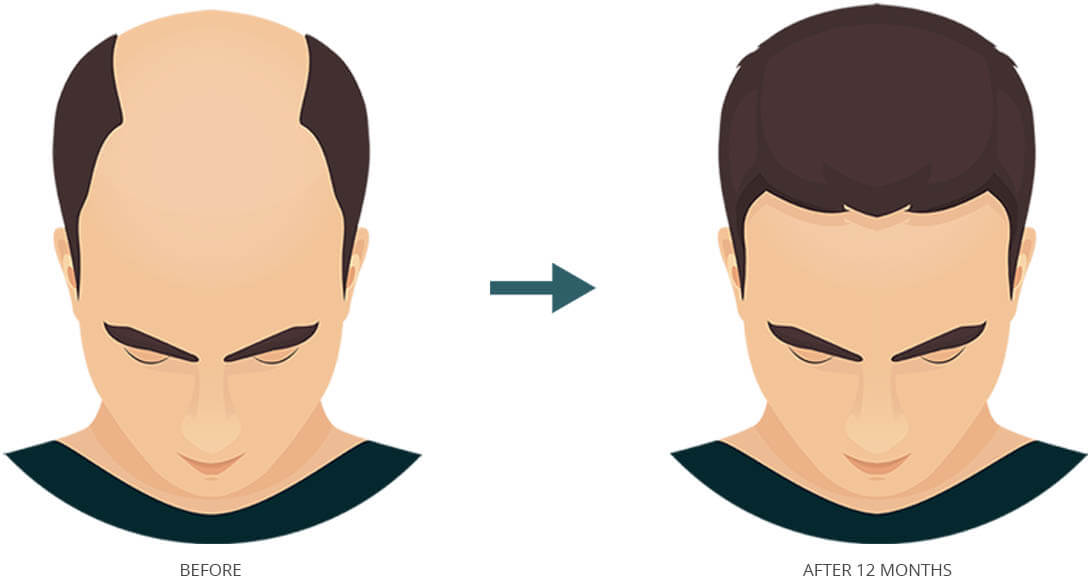
4 STEPS
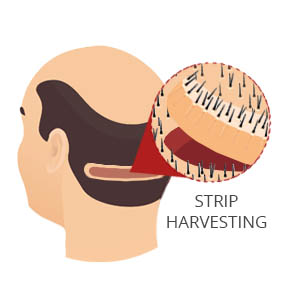
First Step
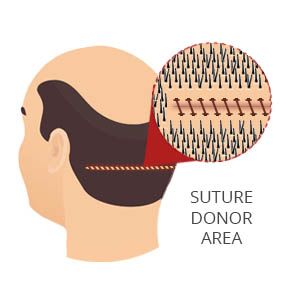
Second Step
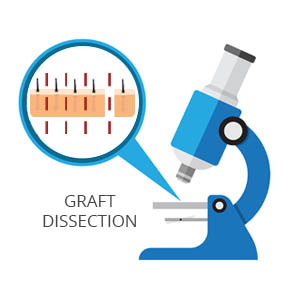
Third Step
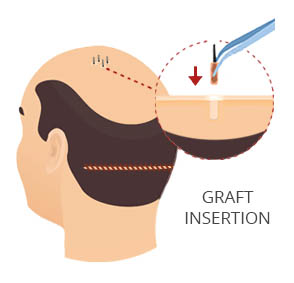
Fourth Step
THE FUT HAIR TRANSPLANT PROCESS

4 STEPS

First Step

Second Step

Third Step

Fourth Step
The FUT Hair Transplant Methods
The FUT method, also known as follicular unit transplantation or the ‘strip method,’ is a widely used hair transplant procedure globally, known for its high success rates and cost-effectiveness.
During this procedure, the surgeon removes a strip of skin from the donor area, usually at the back of the head. Afterward, they carefully divide this strip into individual follicular units under a microscope and prepare them for insertion into the recipient area. The surgeon then makes small incisions in the scalp to insert each unit individually, and the entire process typically takes a few hours.
While recovery times may be slightly longer compared to other methods like FUE, any discomfort is minimal and manageable. Your Patient Advisor will ensure you have all the necessary information for post-procedure care. Most patients recover quickly and can return to work within days.
What is The Cost of a FUT Hair Transplant?
One significant benefit offered by FUT is the cost. At Hair Restoration Centers we offer competitive quotes.
How much your hair transplant will cost depends on your requirements. For a confirmed quotation please submit a request and we will contact you to advise.
The FUT Hair Transplant Procedure
Donor Area
Our surgeon surgically removes a thin strip of hair from the back of the head at the base of the neck, divides the grafts, and relocates the hair follicles to the top and front of the head. The hair at the back of the head is resistant to the chemical dihydrotestosterone (DHT), preventing it from falling out of the scalp. This explains why men often have only a wreath of hair at the back and sides of the head.
After applying a local anesthetic, the doctor proceeds by removing a small strip of hair from the “donor” area at the back of the head. The incision is secured with sutures, and although it leaves a minor scar, it is hidden by the hair falling down over the scar area.
Dividing the Grafts
The surgical team is instructed by the surgeon on precisely how to divide the grafts, dissecting the strip into very small follicular units or hair group grafts. These grafts, each essentially an organ, have a blood supply and are chemically regulated like other organs of the body, quickly returning to homeostasis when transplanted.
Small slits are then created in the area where the grafts will be transplanted, re-creating the natural hair growth pattern. This involves both artistry and technical skill, with the specific depth, angle, direction, size, and width. This is crucial to the proper placement and growth of the transplanted hair. This phase is the most critical and time-consuming of the procedure.
Transplant of Grafts
The doctor supervises the placement and relocation of the grafts to the receptor area, ensuring they are placed into the receptor site correctly. The relocation process is minimally invasive and resembles a minor surgical procedure. While some discomfort may occur during and after hair transplant surgery, serious pain is rare. Patients remain awake and alert throughout the procedure and can have a friend or spouse present.
How Long Does The FUT Procedure take?
The time it takes to complete a hair transplant procedure varies according to the number of hair grafts implanted. A FUT Hair Transplant can take anywhere from 3 to 6+ hours. Speak to a patient advisor today to get a detailed quote and estimate of how long your FUT Hair Transplant might take.
What needs to be done before my FUT procedure?
Shower and wash and dry your hair thoroughly prior to the surgery. It is also important that patients remember NOT TO CONSUME ANY ALCOHOL or take ANY ASPIRIN for a period of 24 hours prior to the surgery. This may cause excessive bleeding during the procedure.
After the FUT Hair transplant Surgery
Some people are concerned about how they will look after the procedure. Since hair restoration is a minor form of surgery, directly following the procedure it may be possible to return to normal activities fairly quickly. We do recommend resting during the day of the procedure.
The days following the procedure, the patient can return to work and recreational activities. We recommend refraining from strenuous activities such as weight lifting, racquet ball or tennis for a week or two to avoid accidentally damaging the grafts. The hair can and should be washed gently with the fingers and a very mild shampoo.
After a few days, the redness will subside at the top of the head and the grafts will blend in with the existing hair.
When will my hair start growing and what will it look like?
In the first 1 to 3 weeks, new hairs will appear to be growing quickly. This in actuality represents the beginning of a phase known as “shedding,” the time when the hair follicles actually go dormant.
Following transplant surgery, the hair follicles go into shock, or a dormant phase. This is normal, expected and predictable. This phase typically lasts 3 to 6 months. You will not begin to see new hair growth until the follicle moves out of this phase and onto the next growth phase. Many patients get anxious waiting to see if the transplant was successful. However, if you know that this “shedding” is typical and normal it sometimes eases anxiety.
Hair Growth Timeline
Typically, hair growth starts within 2 to 4 months. Hair growth occurs in cycles, with each cycle starting a few days or weeks from the previous cycle. Initial hair growth produces a smaller than usual shaft. This changes as the hair reaches about 1/2 inch in length. Most men actually prefer this slower hair growth process because it makes any change subtle and less obvious.
By 6 months, most people can see the effect of the process. By 12 months, the growth and bulk will have reached 90% of its total growth. Hair can, and sometimes does, continue to mature for as long as another 24 months following surgery. For this reason, we advise patients to not evaluate the results until a full year has passed.
Healing Timeline
Surgical healing is also fairly fast. Within 1 to 2 weeks the specific sites that received donor “hairs” have healed. However, it might take many months for the hair to regain full strength.
About half of our patients see results on the crown area within the first 1 to 2 weeks. And even when they do, the hair is just barely visible.
Previous FUT Procedure?
If you have previously had a Follicular Unit Transplantation, your previous obvious scars can make you skeptical about what to expect with our procedure. If this is the case, we strongly urge you to speak with a patient of ours who is one or two weeks post surgery and ask them about their experiences. Most patients are all too glad to share their experiences and help you decide if this procedure is right for you.
